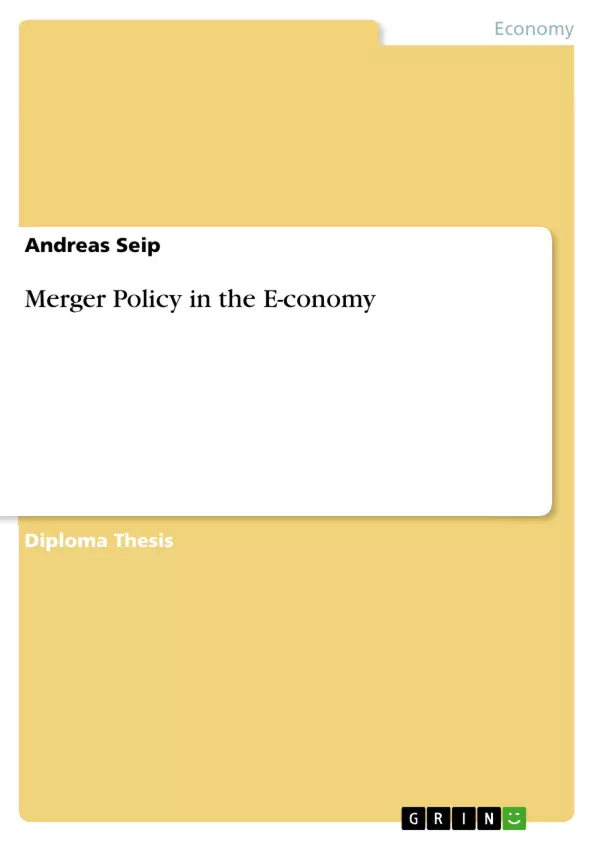This paper addresses the economic policy context surrounding the European merger regulation in high-tech industries. The rapidity of technological change raises questions as to the operation of the dynamic parameters underlying high-tech industries. While the identification of those parameters appears to be straightforward, the interpretation of the effects posed by the dynamics is rather controversial.
On the one hand, it is argued that the very dynamics of high-tech industries create or strengthen dominant companies whereby consumers run the risk of adopting inefficient technologies.
However, the present paper is to contest this reasoning since performance competition and the resultant Schumpeterian process of disequlibria makes a so-called lock-in unlikely.
The second chapter is to identify the distinctive parameters of high-tech industries, whereby a contrasting analysis between the two dimensions of economic performance, establishes dynamic competition as best utilised to serve the furtherance of consumer welfare. The third chapter is to consider the implications of dynamic competition for current relevant market definition by discussing the deficiencies of current practice. Recent competitive developments appear to confirm a broad, intermarket and technologies-based competition among firms. The fourth chapter, therefore, seeks to propose analytical tools that are capable of evaluating the state of competition more accurately. To that end, the cornerstones of relevant market definition are redefined by including a performance based test, an enquiry into capability explanations and the setting of time frames to assess entry competition.
The final chapter is to conclude that although Schumpeterian dynamic competition deals with the expectation of innovation, the proposed analysis is the more accurate approach to intermarket competition. The goal of this paper is to provide a pragmatic framework that assists merger analysis in evaluating the ongoing transformation of industrial organisation in the high-tech environment.
Inhaltsverzeichnis (Table of Contents)
- Chapter One: Introduction
- Chapter Two: The E-conomy
- Section 2.1.: The Peculiarity of the E-conomy
- Section 2.1.1.: Investment and Increasing Returns
- Section 2.1.2.: Network Effects
- Section 2.1.3.: Output Properties
- Section 2.1.4.: Pioneering Effects and Instant Scalability
- Section 2.1.5.: The Winner-Takes-Most Effects
- Section 2.2.: The E-conomy's Essence in Antitrust
- Section 2.3.: Dynamic v. Perfect Competition
- Chapter Three: Implications for Competition Policy
- Section 3.1.: The Commission's Relevant Market Definition
- Section 3.1.1.: The Substitutability Test
- Section 3.1.2.: Entry Analysis
- Section 3.1.3.: Market Integration
- Section 3.1.4.: Market Shares
- Section 3.2.: Treatment of Dominance
- Section 3.3.: Accounting for the Risks
- Chapter Four: A Regulatory Outlook
- Section 4.1.: Pragmatic Analysis
- Section 4.1.1.: The SSNIP - A Performance Interface
- Section 4.1.2.: Barriers to Entry and Subtle Incentives
- Section 4.1.3.: Market Power - The Volatile Incidence
- Chapter Five: A Dynamic Intermarket Conception
Zielsetzung und Themenschwerpunkte (Objectives and Key Themes)
This dissertation examines the European merger regulation in the context of high-tech industries, focusing on the dynamic parameters that govern their development. The rapid pace of technological change raises concerns about the potential for dominant companies to emerge and consumers to adopt inefficient technologies. Key themes of the paper include:- The unique characteristics of the "E-conomy," including investment, increasing returns, network effects, output properties, pioneering effects, and the winner-takes-most effect.
- The role of dynamic competition in high-tech industries and its implications for consumer welfare.
- The deficiencies of current relevant market definitions in capturing the realities of intermarket competition in the E-conomy.
- The need for new analytical tools to evaluate competition in dynamic industries, including performance-based tests, assessments of capability explanations, and time frames for entry competition.
- The development of a more accurate and pragmatic framework for analyzing mergers in the context of dynamic intermarket competition.
Zusammenfassung der Kapitel (Chapter Summaries)
Chapter One: Introduction This chapter sets the stage for the dissertation, addressing the economic policy context surrounding the European merger regulation in high-tech industries. It highlights the challenges posed by the rapid pace of technological change and the need to understand the dynamics at play in these sectors. The chapter presents contrasting arguments regarding the impact of these dynamics, with one side suggesting the emergence of dominant companies and the risk of inefficient technologies, while the other side argues that dynamic competition prevents such lock-in scenarios. Chapter Two: The E-conomy This chapter delves into the distinctive parameters of high-tech industries, identifying key characteristics such as increasing returns, network effects, and winner-takes-most effects. It contrasts these with traditional economic models to establish the importance of dynamic competition in promoting consumer welfare in this context. Chapter Three: Implications for Competition Policy This chapter examines the implications of dynamic competition for current relevant market definitions, highlighting the deficiencies of existing practices in capturing the realities of intermarket competition in the E-conomy. It points to recent competitive developments that confirm a broad, intermarket, and technologies-based competition among firms. Chapter Four: A Regulatory Outlook This chapter proposes new analytical tools that can better evaluate the state of competition in dynamic industries. These tools include a performance-based test, an enquiry into capability explanations, and the setting of time frames to assess entry competition.
Schlüsselwörter (Keywords)
The key terms and concepts in this work center around the economic dynamics of high-tech industries, the implications for merger analysis, and the need for a more dynamic and intermarket approach to competition policy. Key words include: E-conomy, dynamic competition, Schumpeterian process, relevant market definition, intermarket competition, performance-based tests, capability explanations, entry competition, merger analysis, high-tech industries, technological change, and consumer welfare.- Citar trabajo
- Andreas Seip (Autor), 2002, Merger Policy in the E-conomy, Múnich, GRIN Verlag, https://www.grin.com/document/185886



